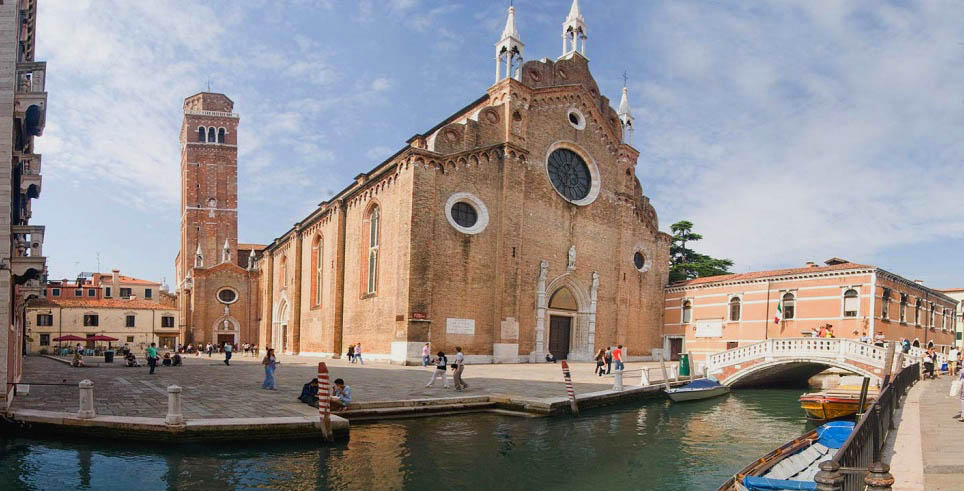From the Rialto Market take the Ruga Rialto, the road that leads from the market to Campo San Polo, and enjoy the shops of clothes and shoes, the restaurants and the beauty of the architecture, until you arrive at the house of Goldoni, the home of the famous playwright Venetian that is now a museum.
Continue towards Campo San Tomà and enjoy a good cicchetto and a glass of wine at the Basegò then reach and visit the wonderful Frari Church in the homonymous campo. The Church holds numerous works of art such as the famous Assunta del Tiziano, the altarpiece by Giovanni Bellini, the table of Sant’Ambrogio by Alvise Vivarini. Admire the majestic wooden choir and the monuments dedicated to Canova, Tiziano, Doge Nicolò Tron and Doge Francesco Foscari.
From the Frari continue to the patisserie Da Tonolo, one of the oldest in Venice and taste the sweets and the pastry, then head to Campo Santa Margherita, where you can find all the Venetian youth, cross it to the PONTE DEI PUGNI..
Above the bridge there are 4 Istrian stone footprints: In ancient Venice was inhabited by two distinct factions the Castellani of sestieri of Castello, San Marco and Dorsoduro, and the Nicolotti of San Polo, Santa Croce and Cannaregio. This bridge had no railings and was a “boundary” between the two opposing sides.
From September until Christmas they challenged punches over the aforementioned bridge. To win The team had to drop the largest number of opponents in the water. On the day of the clash, the contenders (also three hundred per side) sided at the ends of the bridge. The real clash was preceded by a challenge involving the champions of the two teams, each of which placed their feet above two of the footprints present on the surface of the pavement. Soon, the other contenders were also in the clash.
The winner team could have placed its insignia on the bridge: Logically, it was not perpetual and this allowed the claiming of ownership of the other deployment to take place a new clash. Often the public was also involved. Since the clashes were often able to last several hours, at nightfall the gendarmerie intervened to make them cease.
In 1705, when the punches passed to the knives, this kind of contention was forbidden. To give people other possibilities of outburst, another game was established, said of the forces of Hercules: the highest human pyramid, built during the carnival of Venice in St. Mark’s Square, was awarded by the Doge himself. The bridge was rebuilt around 1870: The iron railings were added.











